The moment people discover they might have bed bugs is frequently a scary one. How did they find their way into your home or business? What will it take to get rid of them, and when will they be gone for good? Many will immediately begin looking for the bed bugs’ hiding place and for ways to sanitize the infested area. Unfortunately, bed bugs are often difficult to eradicate. But with the techniques of a professional pest control technician, it is possible!
Step 1: Check for Bed Bugs
Before you panic and whip out cans of pesticides, you’ll want to ensure the pest you’re dealing with is, in fact, bed bugs. Bed bugs leave behind telltale signs of their presence, but spotting an actual bed bug can be tricky. Bed bugs are fast, plus they’re nocturnal, meaning they’re mostly active at night. However, if you know what to look for, you can identify the signs of bed bugs without too much difficulty.
Signs of Bed Bug Activity
You may have bed bug bites if you’ve woken up and noticed itchy welts that weren’t there when you went to sleep. Usually, discovering these bites is the first sign of a bed bug infestation. If you suspect you have a bed bug problem, thoroughly check your home for other signs of bed bugs. You might notice small reddish-brown spots left behind after bed bugs enjoy a blood meal. If you’ve had bed bugs for a while, you may see shed exoskeletons.
Bed Bug Hiding Spots
Due to their small size, bed bugs hide in cracks and crevices you might not even think to check, like inside your mattress or around your bed frame. Here are some common places where bed bugs tend to hide:
- Mattresses and Box Springs: One of the most typical hiding spots for bed bugs is in and around mattresses and box springs. Bed bugs like to stay close to their food source, and unfortunately, in many cases, that means sleeping humans. They hide in seams, crevices, and even inside the mattress itself, making it difficult to spot them.
- Bedding and Linens: Bed bugs often seek refuge in the folds and seams of sheets, pillowcases, and blankets. They can also hide in the ruffles of bed skirts, so it’s essential to wash and inspect these items for signs of infestation regularly.
- Furniture: Couches, chairs, and other upholstered furniture are also prime hiding spots for bed bugs. They burrow into the upholstery and crevices, making it challenging to eradicate them without professional help.
- Nooks and Crannies: Bed bugs can find shelter in cracks and crevices in walls, baseboards, and electrical outlets. They’re incredibly flat and can squeeze into tiny spaces, which makes them hard to find and eliminate.
- Luggage and Personal Belongings: Bed bugs don’t just magically appear — they move from spot to spot by being carried. These pests can hide in suitcases, backpacks, and personal belongings, hitching a ride from one location to another.
- Clothing: Bed bugs can also hide in clothing, especially if discarded on the floor or near a bed. They can cling to the fabric and remain hidden until they decide to feed.
Understanding where bed bugs commonly hide is crucial for effective detection and elimination. Regular inspections, good hygiene practices, and professional pest control services are essential for keeping these elusive pests at bay and preventing infestations in your home.
Step 2: Form a Plan of Attack
Start with Deep Cleaning

If you’ve managed to catch an active bed bug infestation in the absolute earliest stages, you may be able to get rid of bed bugs by thoroughly cleaning your home. To start, strip your bed of all sheets and blankets and immediately put them in the wash. You’ll want to use the hottest heat setting possible in order to kill bed bugs. Once you’ve washed and dried your linens, move on to your clothing, using hot water again. Your washer and dryer will get a workout during this part of the process!
While you’re doing laundry, you’ll want to check your furniture, and, if you’ve traveled recently, your luggage. Bed bugs are hitchhikers, and you’ll want to treat whatever brought bed bugs into your home. Apply cleaning spray or rubbing alcohol liberally, or use a steam cleaner if you have one. If you don’t see any signs of bed bug activity, you may have successfully contained the infestation before it spread out of control.
In addition, vacuum as much of the affected area as you can. Make sure you use a vacuum with a bag so you can remove the bag from your home once you’ve finished vacuuming.
It’s important to note that these tactics will only work if you’ve caught and killed all the bed bugs in your home. Bed bugs multiply quickly, and if they have already started to reproduce, it will be much more difficult to handle an infestation.
What Kills Bed Bugs?
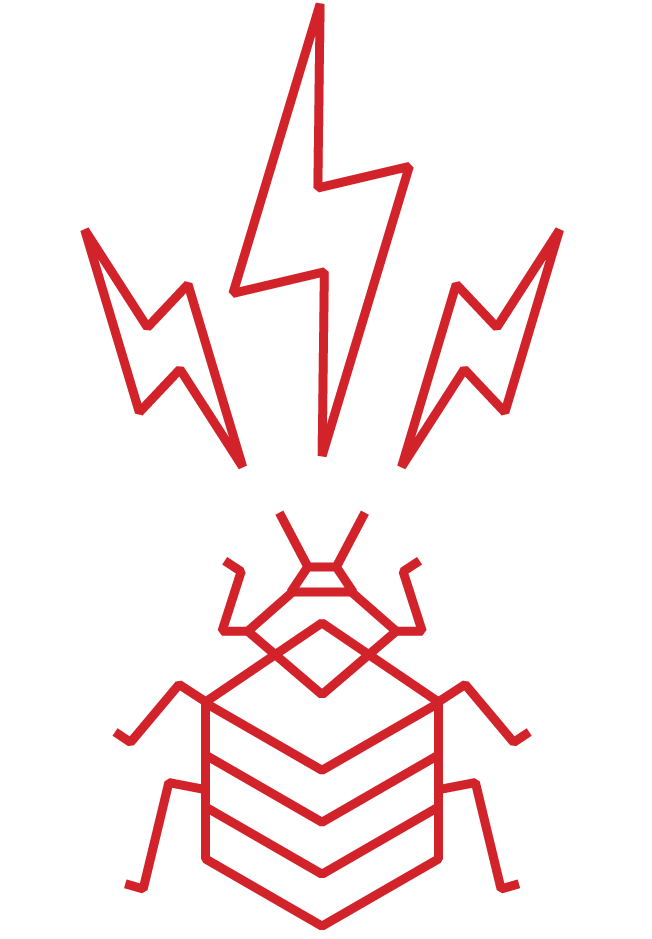
First, you might be asking yourself, “What actually kills bed bugs?” Most pest control companies rely on concentrated heat treatments with special tools and intensive chemical treatments. Bed bugs cannot survive prolonged exposure to high heat, but in order to achieve and sustain these temperatures, you’ll need heavy-duty equipment. If you’re looking to go the chemical route, many pesticides can kill bed bugs, but because bed bugs are excellent hiders, they must be applied correctly to work properly. Common types of treatments that are widely available over the counter include foggers, glue traps, and diatomaceous earth. Armed with an understanding of how to kill bed bugs, it’s time to tackle the problem.
Step 3: Try DIY Bed Bug Solutions
The proper do-it-yourself bed bug treatment for your home depends on a few factors, such as the severity of the infestation, your home’s square footage, and whether or not you have children and pets in the house. Fortunately, there are a few approaches you can take and a few products you can use — though none will be as effective as professional services.
When ridding your home of an unwanted bed bug population, no level of potency or convenience can compensate for the lack of professional training, knowledge, and equipment. Treatments can be more effective when applied in specific areas of the home and at particular times, but the average consumer or homeowner might need to learn when, where, and how to treat pests.
Rather Let the Pros Handle It?
Bed Bug Foggers

Bed bug and flea “foggers” are aerosol cans that spray a continuous mist of insecticides into the air of your home. These “bug bombs” typically disperse chemicals that disrupt insects’ life cycles at a particular stage by killing the bed bug eggs or newly hatched bed bugs and intercepting the next generation of the infestation. This approach eradicates insect eggs and larvae, but adult bed bugs could remain in the home for weeks, especially if they’ve hidden in hard-to-reach spots like mattress seams.
Foggers can be effective, primarily if used repeatedly and in conjunction with other pest control products, but they have several side effects and risks. Foggers are highly flammable, and some require the user to disconnect gas lines from the house to decrease the risk of fire. Fogger chemicals are also dangerous to breathe and handle, meaning you, your family, and your pets will need to leave the house for several hours while treatment is underway — and you may have to do this several times over several days. Plus, in some cases, foggers can leave behind unpleasant chemical odors.
Heat Treatments
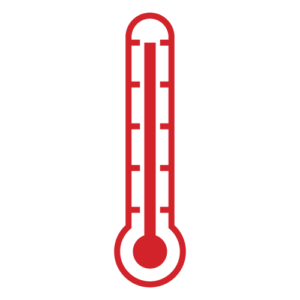
Bed bugs prefer cool temperatures — around 70 degrees — in which they can survive for up to 5 months without a single meal. Bed bugs can even survive in lower temperatures by entering a state of diapause, a form of insect hibernation. However, they are severely impacted by high heat. Bed bugs will die if exposed to temperatures above 113 degrees for 90 minutes.
Bed bug heat treatment equipment is available for purchase online but can be quite expensive — especially considering that you will hopefully only need to use such equipment once. If a specific item or set of items are affected by bed bugs, such as linens or clothing, you can quickly heat a small space in which to kill the bed bugs. However, if your entire room or house is infested, it can be quite expensive and time-consuming to heat the entire space to 113 degrees long enough to kill them. Depending on what kind of equipment you purchase, you may not even be able to sustain temperatures without breaking your heating elements.
Interceptor Traps
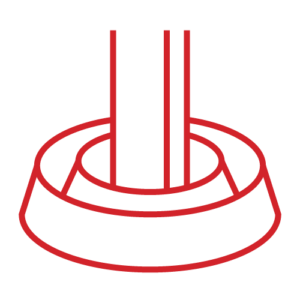
Bed bugs are attracted to vertical surfaces like furniture legs and dressers because they often lead to a sleeping host. Bed bug interceptor traps are small plastic trays placed underneath the legs of couches and bed frames to deter and trap any bed bugs attempting to climb. The interceptors trap bed bugs before they can climb, but they do little in the way of eliminating bed bugs. Once you’ve trapped bed bugs, you can place them in sealed plastic bags for you to dispose of, but if you aren’t careful, you run the risk of them escaping to hide somewhere else.
Bed bug interceptors are, however, an excellent way to monitor the severity of a bed bug infestation — the more bed bugs you find in your trap each day, the more bed bugs are likely in your infested areas. If you place bed bug traps under your furniture and see their numbers dwindle, you can rest assured your other treatment options are working. However, trapping live bed bugs does not kill or remove them. It merely keeps them in one spot where they can live for weeks or even months.
Will DIY treatments get rid of bed bugs?
There are many ways to kill a bed bug, but to do it yourself will take much longer and be less effective than hiring a professional exterminator. Expert knowledge, training, and experience can make the whole process faster and more effective. Furthermore, licensed bed bug control professionals have access to chemicals and protective gear not available at your local hardware store.
It is not difficult to kill a single bed bug. However, locating and killing every bed bug in your home is difficult, especially because they can reproduce extremely quickly. Notorious for their numerous hiding places, bed bugs could be burrowing in your box spring, sofas, bed seams, or other crevices. To rid your home of all unwanted pests using DIY treatments, you may need to spend a great deal of money and time on the problem, and results are never guaranteed.
Remember: most treatments are effective against only a specific stage of an insect’s life cycle, so treatments must be consistent and repetitive. Be sure to employ several tactics, cover every inch of your space, and repeat as needed until you see no more signs of bed bug infestation.
Step 4: When DIY Fails, Call a Professional Exterminator
If you’ve exhausted every DIY bed bug treatment under the sun and you’re still finding these pests in your home, you’re not alone. Bed bugs are incredibly difficult to get rid of, and that’s why many professional pest control companies specialize in bed bug treatments. The types of chemicals and equipment often required to eradicate bed bugs simply aren’t available to the average consumer. No two scenarios are the same, but an experienced pest control company will be able to tailor a treatment plan to your unique situation.
Find Out If Dodson Can Help
Schedule a Free Consultation
Chemical Bed Bug Treatments
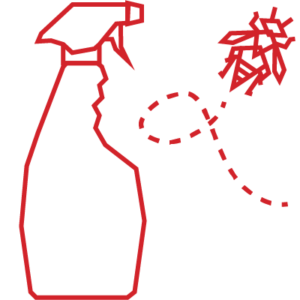
Pest control professionals will use a combination of residual and contact insecticides to eliminate bed bugs. Residual insecticides are applied to surfaces where bed bugs are likely to traverse, such as cracks and crevices, baseboards, and other hiding spots. Contact insecticides are used for killing bed bugs on direct contact and are often applied directly to harborage areas. The choice of insecticides and their application method (think: sprays vs. liquid treatments) may vary based on the specific situation and the pest control company’s protocol.
It’s important to note that chemical treatments for bed bugs should be used by licensed and trained pest control experts to ensure both safety and efficacy. Moreover, some bed bug populations have developed resistance to certain chemicals, so professionals may need to adjust their treatment strategies accordingly. Integrated pest management, combining chemical treatments with other control methods like heat treatments and vacuuming, is often recommended as a comprehensive approach to get rid of bed bugs for good.
Heat Treatments

Whole-room heat treatments can be a highly effective strategy for treating bedbugs. However, it’s important to emphasize that professional heat treatments should only be conducted by trained and certified experts to ensure safety and effectiveness. These treatments involve raising the temperature in the infested area to a level that is lethal for bed bugs, typically around 120-140 degrees Fahrenheit (49-60 degrees Celsius). They require specialized equipment to monitor and maintain the desired temperature throughout treatment. Additionally, heat treatments may not be suitable for all situations, especially in areas where structural or fire hazards exist.
Fumigations
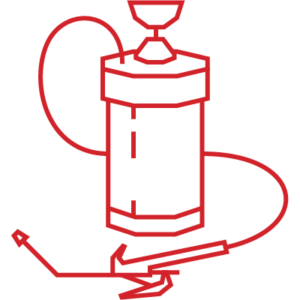
The most effective and quick solution is to use a chemical fumigate using a tape and seal method. In the fumigation scenario, the pest control technicians will use a specially designed insecticide to eradicate bed bugs but keep possessions unharmed. It’s unlikely that bed bugs survive this form of extermination when done correctly. Unfortunately, many pest control providers are not certified or insured to conduct fumigations, and they should never be attempted as a DIY solution. This is where Dodson Pest Control’s 75+ years of experience comes into play. We have invested heavily in understanding bed bugs and how best to effectively (and safely) treat for them.
Get Rid of Bed Bugs Fast with Dodson Pest Control
If you think you might have a bed bug infestation, contact Dodson Pest Control immediately, as you probably won’t be fully able to get rid of them on your own.
